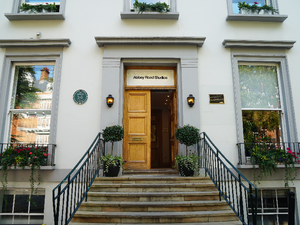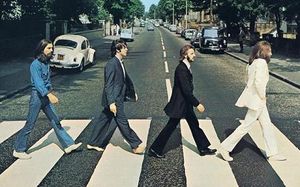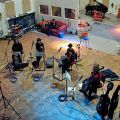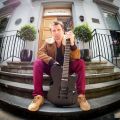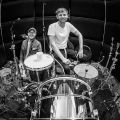Abbey Road Studios
Abbey Road Studios is one of the most iconic studios, if not the most iconic studio, named after the street it sits on, "3 Abbey Road", based in the City of Westminster, in London, England. Established in 1931 by the Gramophone Company (presently known as EMI), it's most known for its client, The Beatles, who used the studios to record most of their albums in the 1960s, using inovative and then-new approaches to recording music, together with producer George Martin. The Beatles also took a their infamous zebra crossing photo just outside the studios, appearing on the cover of their album titled "Abbey Road". EMI owned the studios up until 2013, when Universal Music Group took control of part of it. In 2010, Abbey Road Studios became a Grade II listed building over outcry to selling the infamous studios.[1].
Apart from The Beatles, there have been numerous acts from many decades whom have recorded albums/singles/EPs in these studios, including Glenn Miller, Pink Floyd, Massive Attack, Aretha Franklin, The Rolling Stones, Oasis, Adele, The Holies, and many more. The studios have also been used for a variety of orchestral sessions for multimedia soundtracks, including movies like the Harry Potter movie franchise, the Lord of the Rings and the Hobbit trilogies, several works off of the Marvel Cinematic Umiverse, the Star Wars franchise and games like Call of Duty, Halo 5 and Final Fantasy.
Studios
Inside the studio complex are three original studios, which are also the biggest recording spaces, all of which were in the building since the 1930s. Recently, Abbey Road added three smaller studios to the list of studio spaces. Abbey Road also has several mastering rooms.
Studio One
Studio One is the world's largest purpose-built studio, and can accomodate a large symphony orchestra. As such, it's known to have been the main studio for orchestral recordings and for soundtracks. Over the years, the studio payed host to famous classical composers like Edward Elgar and Sergei Prokofiev. As a session studio, it's been used by artists such as Stevie Wonder, U2 and Harry Styles, amongst others.
Studio Two
Studio Two is Abbey Road's most famous studio. It is the studio used by The Beatles, Pink Floyd and Oasis and is the second largest studio in the building. The studio was designed for popular music recordings in the 1930s, example being swing bands. The studio's control room has a 60-channel AMS NEVE 88RS board with a surround monitor section. The studio still houses an EMI TG12345 desk and an EMI REDD desk from the 1960s. Both desks are still used. The studio also still keeps all the keyboards which were used by The Beatles.
This studio is also where Muse recorded Origin of Symmetry.
Studio Three
Alike studio two, studio three was also used by The Beatles for the album Revolver, and Pink Floyd for the album The Dark Side of the Moon. It is also the studio at which Amy Winehouse recorded some of her final songs. The centerpiece of the studio is an SSL G-Series console. Out of all the three original rooms, this room served as the blueprint for what the modern recording studio is.
This is the studio in which Muse recorded Will of the People.[2]
The Gatehouse
The Gatehouse is a small and modern tracking studio, featuring an AMS Neve BCM10/2 16-fader analog console, and is built for small bands or vocal acts. Alongside The Front Room and The Penthouse, it is one of the recently built studios with the aim of attracting new clients.
The Front Room
The Front Room is the second of the three small contemporary studios. It's been designed for small-scale recordings and writing sessions and is built around a 24-fader SSL Duality digital mixing console. It's paid host to artists like Nile Rodgers & Chic, Rudimental, George Ezra, and more.
The Penthouse
The Penthouse was primarily designed for both film and music mixing sessions, being outfitted with a Dolby ATMOS sound system. The studio can also be used for small-scale recording sessions. It is based on a Pro Tools Avid S6 console and has been used to mix artists such as Ariana Grande and Nick Cave and movies like A Star Wars Story, 1917 and Rocketman.
Custom 75
The studio belongs to the Abbey Road Institute, a music production school established by the studio. It is named after the audio console of the same name, which belongs to the institute. It has a post-production room for film aswell as five mastering rooms.
Albums recorded by Muse at Abbey Road Studios
- Origin of Symmetry (partially)
- Will of the People (drums - partially)
Muse TV performances filmed at Abbey Road Studios
Abbey Road Studios gallery
References
- ↑ Anita Singh. (2010-02-23). Telegraph article covering building status. Telegraph. Retrieved 2012-02-27 from www.telegraph.co.uk.
- ↑ https://www.instagram.com/p/C2kmazlo7aL/
